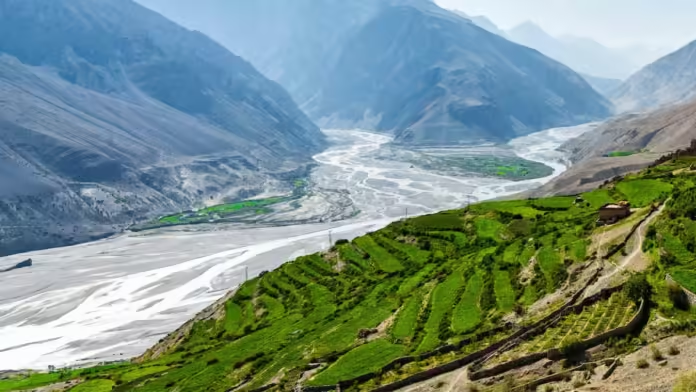The Northeastern region of India has recently garnered national recognition, with five of its villages earning prestigious titles in the Best Tourism Villages 2024 initiative. Among the 36 villages across the country that received accolades, the Northeastern villages showcased their unique cultural heritage, natural beauty, and commitment to sustainable tourism. This recognition highlights the region’s potential as a thriving tourism hub.
The selection process for the Best Tourism Villages involved rigorous criteria, including a village’s ability to promote cultural values, showcase traditions, and engage in responsible tourism practices. The initiative aims to encourage rural development and preserve the cultural and environmental integrity of these villages. The villages from the Northeast stood out not only for their enchanting landscapes but also for their community-led efforts to enhance the visitor experience while prioritizing local traditions.
One of the highlighted villages is Mawsmai in Meghalaya, known for its stunning limestone caves and vibrant local culture. The village attracts tourists with its breathtaking natural beauty and the opportunity to experience the rich traditions of the Khasi tribe. Mawsmai’s commitment to preserving its unique identity while welcoming visitors makes it a worthy recipient of the Best Tourism Village title.
Another notable mention is Majuli in Assam, the largest river island in the world. Majuli is famous for its rich cultural heritage, unique festivals, and the traditional arts of the Assamese people. The island is a living museum of Assamese culture, showcasing traditional dance forms, music, and crafts. Its recognition as a Best Tourism Village underscores its significance as a destination for those seeking an authentic cultural experience.
In addition to Mawsmai and Majuli, the village of Tawang in Arunachal Pradesh also earned accolades for its stunning landscapes and spiritual significance. Nestled in the Himalayas, Tawang is home to the famous Tawang Monastery, one of the largest Buddhist monasteries in India. The village attracts pilgrims and tourists alike, drawn by its serene environment and rich spiritual heritage. Tawang’s efforts to promote responsible tourism while preserving its cultural and natural assets contributed to its recognition.
Further south, the village of Khonoma in Nagaland gained recognition for its sustainable tourism practices. Known as the first “green village” in India, Khonoma has taken significant steps to conserve its natural resources while promoting eco-tourism. The community’s commitment to protecting its environment while showcasing its rich Naga traditions makes it a role model for other villages in the region. Visitors to Khonoma can immerse themselves in local customs, enjoy traditional cuisine, and explore the stunning landscapes that surround the village.
Lastly, the village of Ziro in Arunachal Pradesh is celebrated for its picturesque rice fields and vibrant tribal culture. Ziro is home to the Apatani tribe, known for their unique customs and practices. The village attracts tourists with its annual Ziro Music Festival, which celebrates local and national talent in a stunning natural setting. Ziro’s recognition as a Best Tourism Village highlights its potential as a destination that seamlessly blends culture, music, and nature.
The accolades received by these five villages not only reflect the rich diversity of the Northeast but also serve as a reminder of the region’s potential to contribute significantly to India’s tourism landscape. The recognition encourages other villages in the region to embrace sustainable tourism practices, preserve their cultural heritage, and create unique experiences for visitors.
As the government promotes tourism as a vital sector for economic development, the success of these villages can inspire similar initiatives across the country. The focus on sustainable practices ensures that local communities benefit from tourism while protecting their unique identities and environments.




